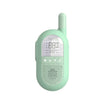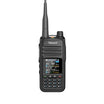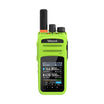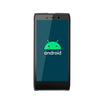Maximising battery life has always been one of the great challenges for mobile devices with limited options for increasing the talk time on a single charge. Since an individual call on two-slot TDMA only uses one of the two timeslots it requires only half of the transmitter’s capacity. The transmitter is idle half of the time; whenever it’s the unused timeslot’s “turn”. Using the example of a typical duty cycle of 5 percent transmit, 5 percent receive, and 90 percent idle, the transmit time accounts for a high proportion of the drain on the radio’s battery. By cutting the effective transmit time in half, two-slot TDMA can enable up to 40 percent improvement over analogue radios.
(One manufacturer’s published product literature gives a talk time of 9 hours operation for analogue mode but 13 hours for digital mode on the same radio). DMR digital devices can also include sleep and power-management technologies that increase battery life.
Many factors affect power consumption in an individual device. When using published battery life figures for widely marketed DMR and FDMA digital radios data shows that for each hour of usage the TDMA require between 19% and 34% less battery capacity than the FDMA models. Choosing a technology with lower energy use gives more flexibility as well as environmental benefits. As communications needs grow (for example greater data requirements) more battery capacity is needed and it seems logical to move towards technology that is inherently more efficient and capable of supporting additional functions. As discussed above, DMR infrastructure is also simpler than that required for FDMA systems, therefore needing less energy. These power efficient features give DMR users a leaner and greener radio network as well as one with the benefit of long battery life on the radios themselves.
(One manufacturer’s published product literature gives a talk time of 9 hours operation for analogue mode but 13 hours for digital mode on the same radio). DMR digital devices can also include sleep and power-management technologies that increase battery life.
Many factors affect power consumption in an individual device. When using published battery life figures for widely marketed DMR and FDMA digital radios data shows that for each hour of usage the TDMA require between 19% and 34% less battery capacity than the FDMA models. Choosing a technology with lower energy use gives more flexibility as well as environmental benefits. As communications needs grow (for example greater data requirements) more battery capacity is needed and it seems logical to move towards technology that is inherently more efficient and capable of supporting additional functions. As discussed above, DMR infrastructure is also simpler than that required for FDMA systems, therefore needing less energy. These power efficient features give DMR users a leaner and greener radio network as well as one with the benefit of long battery life on the radios themselves.






























